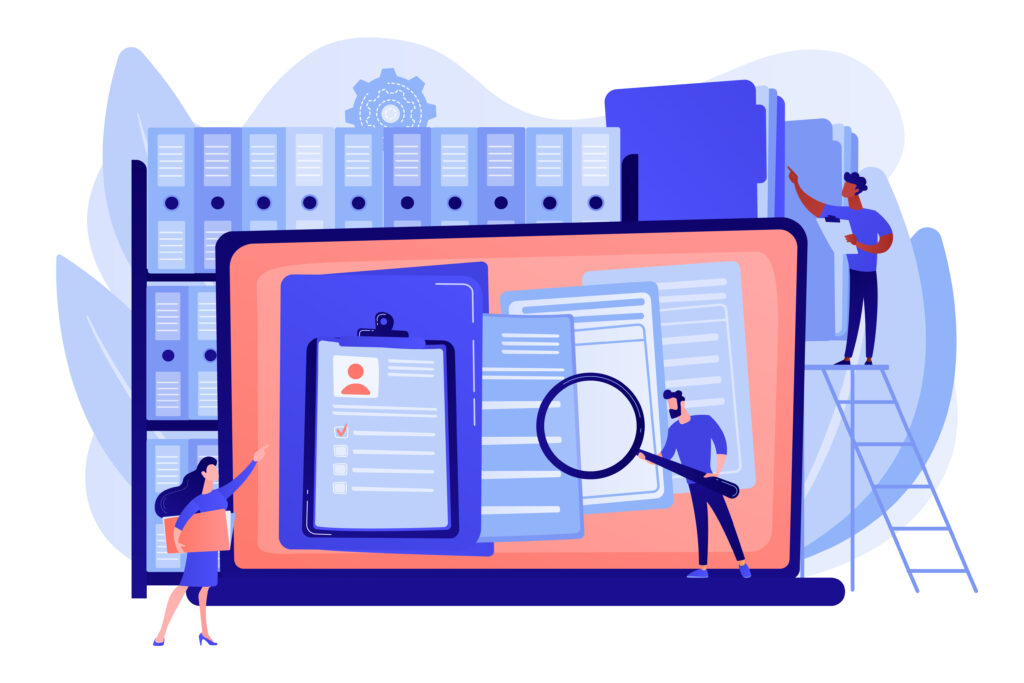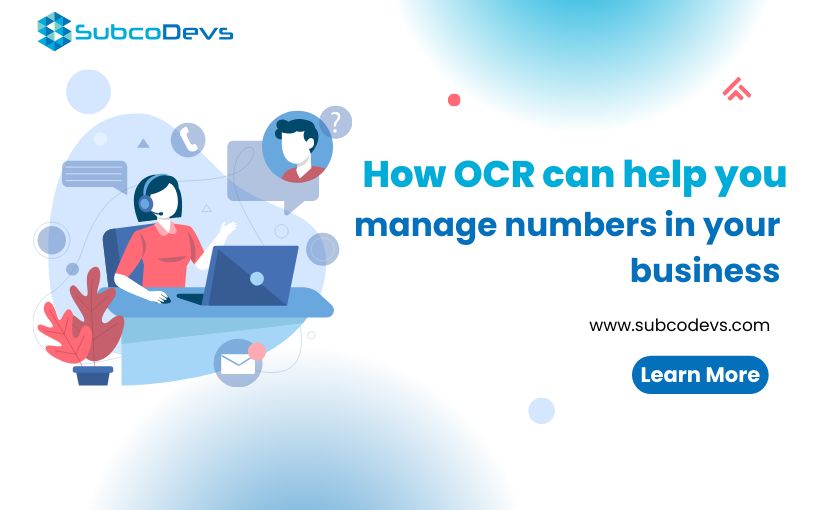In today’s fast-paced business world, every moment counts. The manual data entry, paper sorting, and deciphering handwritten documents consume time and resources, hampering productivity. Optical Character Recognition (OCR) emerges as a game-changing technology silently reshaping business operations.
Once considered niche, OCR is now a powerful ally for organizations, regardless of size or industry. It goes beyond paper-to-digital conversion, unlocking data’s true potential. In this blog, we’ll explore OCR’s world and how it simplifies operations, saves time, and boosts businesses’ bottom line.
What is OCR?
Optical Character Recognition (OCR) is a widely embraced method for data entry. It digitally scans and recognizes printed or handwritten text and images, translating them into digital character codes. This data becomes readily accessible and shareable electronically.
OCR’s impact is significant, particularly for businesses handling large document volumes and extensive scanning. It swiftly sifts through vast content repositories, extracting valuable data crucial for decision-making, especially in data-intensive sectors like banking.

How OCR Works
OCR is commonly used to digitize text from physical documents, making them editable and searchable electronically. Here’s a simplified explanation of how OCR works:
- Image Acquisition: OCR begins by acquiring an image containing text, obtained through scanning, smartphone photos, or extracting text from a PDF or image file.
- Preprocessing: Images undergo preprocessing to enhance quality, including noise reduction, converting to black and white, rotation correction, and text region identification.
- Character Recognition: OCR software recognizes individual characters using pattern recognition algorithms, machine learning, or neural networks.
- Postprocessing: Recognized text may undergo postprocessing, correcting errors through spellchecking, contextual analysis, and confidence scoring.
- Output: OCR generates machine-readable text documents in various formats (plain text, PDF, HTML), enabling editing, searching, and storage.
Advancements in OCR technology, including improved recognition algorithms and machine learning, expand its capabilities to handle different fonts, languages, and writing styles. OCR finds applications across industries, from document digitization to text extraction from images and enhancing accessibility for visually impaired individuals.
Key Advantages of OCR
OCR offers numerous benefits for businesses:
- Streamlined Data Entry: OCR reduces manual data entry, enhancing accuracy and efficiency.
- Enhanced Accessibility: It converts printed or handwritten materials into digital formats, improving accessibility for visually impaired individuals.
- Cost Savings: Automation reduces labor and physical document storage costs.
- Searchable Documents: OCR makes documents searchable, facilitating efficient data retrieval.
- Improved Compliance: It helps maintain regulatory compliance, reducing the risk of violations and penalties.
- Faster Decision-Making: OCR accelerates data access, enabling quicker responses to customer needs and market changes.
- Efficient Workflows: It integrates with document management systems, enhancing workflow efficiency.
- Competitive Advantage: Adopting OCR can give businesses an edge by processing information faster and more efficiently.
- Data Analytics: OCR unlocks insights from data for better decision-making.
- Environmental Responsibility: OCR reduces paper usage, aligning with sustainability goals.

Why Your Business Should Invest in OCR
Businesses can reap substantial benefits by embracing Optical Character Recognition (OCR) technology. Let’s explore these advantages in a straightforward way:
- Streamlined Data Entry: OCR simplifies manual data entry, saving time and effort. It automates text extraction from documents, reducing errors, improving data accuracy, and boosting efficiency.
- Enhanced Accessibility: OCR makes content more accessible. It turns printed or handwritten materials into digital formats that can be easily read by text-to-speech software or screen readers, benefiting visually impaired employees and customers.
- Cost Savings: OCR leads to long-term cost savings. It automates data extraction and document processing, reducing labor costs tied to manual entry, storage, and retrieval. It also cuts down on physical document storage expenses.
- Searchable Documents: OCR makes documents searchable. Businesses can quickly and accurately search for specific information in large volumes of documents, which is invaluable for legal, compliance, and research needs.
- Improved Compliance: In regulated industries like healthcare and finance, OCR ensures accurate data processing, aligning with regulations and lowering the risk of compliance violations and penalties.
- Faster Decision-Making: OCR speeds up decision-making by providing instant data access. Employees can quickly find and use relevant information from documents, resulting in faster responses to customer inquiries, market changes, and business opportunities.
- Efficient Document Workflows: OCR integrated into document management systems streamlines document handling. Businesses can automate document routing, approvals, and archiving, enhancing overall efficiency and productivity.
- Competitive Advantage: Embracing OCR technology offers a competitive edge. It enables businesses to process information faster, respond to customer needs more efficiently, and adapt to changing market conditions more effectively than competitors using manual processes.
- Data Analytics: OCR unlocks insights from untapped data sources. By digitizing documents, organizations can perform data analytics, identify trends, and gain a deeper understanding of their operations and customer behavior.
- Environmental Responsibility: OCR contributes to sustainability efforts by reducing reliance on paper-based processes. This aligns with corporate social responsibility goals and demonstrates a commitment to environmental stewardship.
In Conclusion
In conclusion, Optical Character Recognition (OCR) is a game-changer for businesses in the digital age. It empowers organizations to automate data entry, improve accuracy, enhance accessibility, and streamline document workflows. The benefits of OCR go beyond efficiency gains; they include cost savings, compliance assurance, faster decision-making, and a competitive advantage.
Given the many advantages of OCR, businesses can’t afford to overlook this transformative technology. Whether you’re in healthcare, finance, legal, or any other industry, OCR has the potential to revolutionize how you handle documents and data.
To unlock OCR’s full potential for your business, partner with SubcoDevs, an experienced industry leader in OCR technology. We can help you navigate OCR technology complexities and tailor it to your specific needs, ensuring you maximize its benefits.
Don’t miss the opportunity to revolutionize your business operations and gain a competitive edge. Contact SubcoDevs today to learn how OCR can transform your business. Let us guide you on the path to greater efficiency, accuracy, and success in the digital era. Your journey toward a more streamlined and data-driven future begins here.
